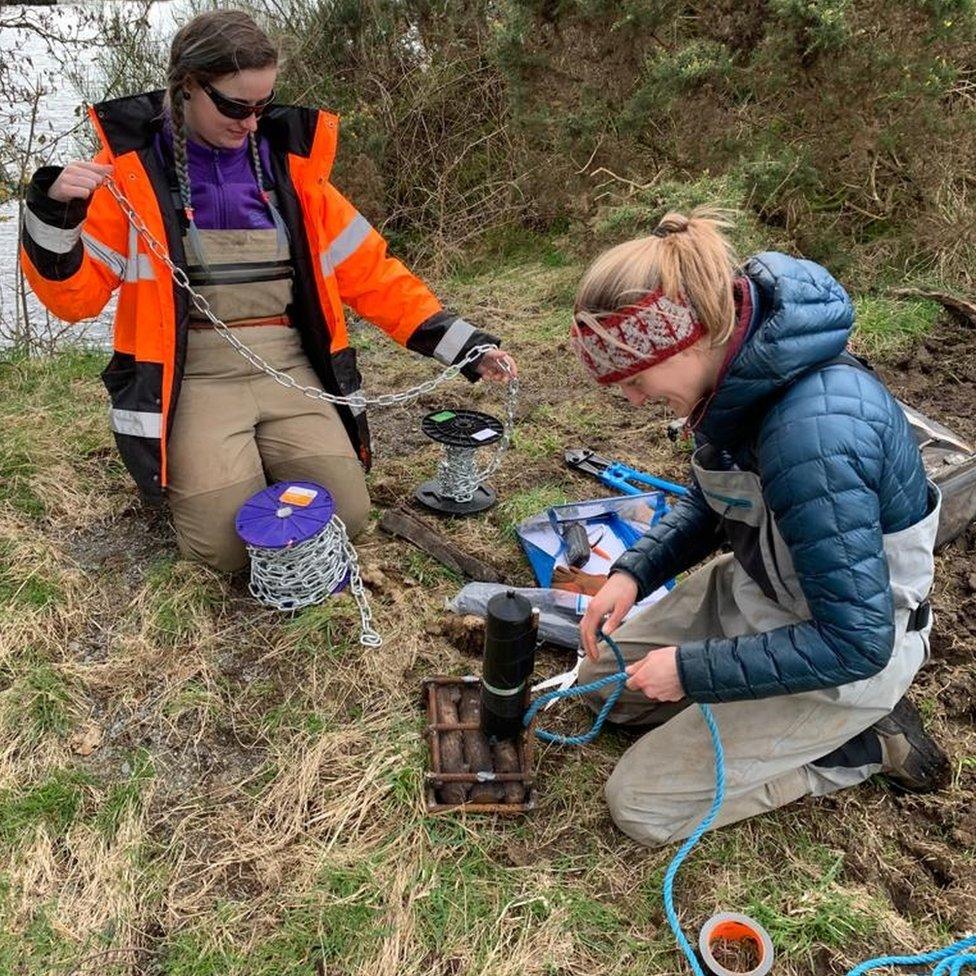Tracking the travel itinerary of the River Dee's salmon
- Published

About 40 smolts have been tagged in order to track their progress on the River Dee
Advances in technology have allowed tiny transmitters to be fitted to young salmon in southern Scotland in a bid to help boost their survival rate.
The project began in 2021 on the Ken/Dee river system in Galloway.
It found that more than half of the tagged fish were able to make it to the inner estuary.
Now a further 40 smolts - the young fish - have been tagged in advance of their trip downstream to build up an even better picture of their journey.

The work has been led by the Galloway Fisheries Trust (GFT) and supported by a wide range of organisations including Drax - the owners of the Galloway Hydro Scheme.
The project has only been possible thanks to the development of transmitters and batteries small enough to ensure they do not influence the swimming ability of small fish.
Their journey can then be tracked using 33 receivers installed along the banks of the river, with data then analysed by teams from the GFT and the University of Glasgow.
The receivers are spread out from just below the Polharrow Burn north of Dalry all the way down to Kirkcudbright.

More than 30 receivers have been fitted along the length of the river
At one time salmon were abundant across the Solway with the River Dee one of the most productive rivers.
However, work along its route in the 1930s to harness energy had an impact on fish trying to migrate through the system.
Fish ladders were built at many of the dams but understanding the downstream journey of smolts has proved more difficult.
Jamie Ribbens, senior biologist at GFT, said: "This further study aims to understand in more detail how the fish are behaving under different conditions to investigate what could be done to ease their migration and thus maximise the numbers of smolts able to leave the Dee successfully.
"We need everyone working together to restore the salmon population in the Dee."
Martin McGhie, Drax's manager of the Galloway and Lanark Hydros, said it was keen to get a better understanding of how salmon were affected by the hydro-electric scheme and improve the ecology.

The study ultimately hopes to help boost the survival chances of the salmon in the area
He said the first trials had provided a "fascinating insight" into the journey of the smolts and it was hoped the new work could provide even greater understanding.
Nick Chisholm, Galloway Glens Project Officer, added: "It's great to see that a little bit of support from our National Lottery funding and inspirational leadership from the GFT allow us to unlock some of the salmon's travel itinerary.
"The information that is gathered from this will be incredibly valuable and help the operator of the hydro scheme manage water flow for the salmon's benefit."
It is hoped the project can be repeated next year to build an "increasingly reliable" picture of the details of the fishes' journey.